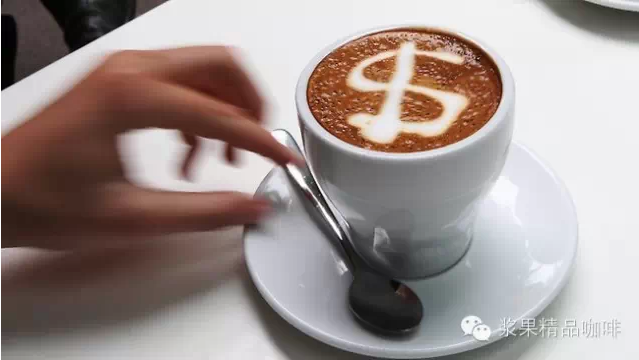Coffee powder grinding requires coffee bean grinding "grinding", "grinding" and "mortar grinding" black coffee.
There are three kinds of grinding methods for coffee beans: "grinding", "grinding" and "mortar grinding".
Mortar mill: if you can't find good grinding equipment, all you can do is to use a pestle and a mortar to slowly enjoy the fun of labor.
Polishing: most modern machines actually cut up coffee beans at a speed of 20, 000 to 30, 000 revolutions per minute. The consumption parts of this kind of blade grinder have a longer life, but the accumulated heat in the grinding and the uneven size of the coffee chips make it difficult to extract high-quality drinks. In theory, this kind of grinder can only be used for drip coffee pots. The dust they produce can clog the filters in espresso and French press machines.
Grinding: two rotating parts are used to squeeze and crush coffee beans. The grinding parts can be disc-shaped or conical.
All coffee is made from ground coffee powder and hot water; it should be cleaned after it is cooked. The thickness of the coffee powder is related to the cooking method chosen. Proper water temperature is very important. The choice of water temperature is related to cooking utensils, coffee bean species, coffee bean baking degree, the water temperature is too low, the flavor of coffee beans can not be fully extracted; water temperature is too high, excessive extraction, taste deterioration and often bitter.
If the water passes through the coffee only once, the finished product will contain mainly soluble substances (including caffeine). If the water cycle passes through the coffee powder many times, the less soluble substances in the coffee beans will also enter the finished product, causing the taste to be bitter, so this method is not favored by enthusiasts.
The common ratio of coffee powder to water in Western countries is 15,30mg coffee powder (one to two tablespoons): 300ml of water (six ounces). Coffee lovers often take the upper limit of this ratio.
Please pay attention to make appropriate adjustments according to the thickness of the coffee powder. Continuous heating destroys the flavor of brewed coffee, and degradation also occurs at room temperature. Therefore, it is often a failure to keep the coffee warm. However, in an anaerobic environment, coffee can be preserved for a long time at room temperature.

Important Notice :
前街咖啡 FrontStreet Coffee has moved to new addredd:
FrontStreet Coffee Address: 315,Donghua East Road,GuangZhou
Tel:020 38364473
- Prev

All kinds of small hand equipment, single black coffee, fine coffee.
Follicular coffee is made under atmospheric pressure using a variety of small manual equipment. Although it has congenital problems such as low efficiency, poor stability and weak continuous production capacity, some cafes have always had doubts about whether to put it on the product list, but with the deepening of the boutique coffee movement, follicular coffee begins to glow with new vitality. Use cold with Espresso
- Next

Relationship between grinding, extraction rate and concentration the best extraction rate and concentration of black coffee
Coffee extraction is like doing an experiment, controlling the change between solvent (water) and solute (coffee) under environmental variables. How to dissolve the effective substances in coffee according to demand under appropriate conditions is the tireless experimental theme of all coffee lovers. Shotsmrkt. In the name of "coffee addiction", we will regularly sort out the experience and imagination of coffee brewing. Make a good cup of coffee
Related
- Beginners will see the "Coffee pull flower" guide!
- What is the difference between ice blog purified milk and ordinary milk coffee?
- Why is the Philippines the largest producer of crops in Liberia?
- For coffee extraction, should the fine powder be retained?
- How does extracted espresso fill pressed powder? How much strength does it take to press the powder?
- How to make jasmine cold extract coffee? Is the jasmine + latte good?
- Will this little toy really make the coffee taste better? How does Lily Drip affect coffee extraction?
- Will the action of slapping the filter cup also affect coffee extraction?
- What's the difference between powder-to-water ratio and powder-to-liquid ratio?
- What is the Ethiopian local species? What does it have to do with Heirloom native species?

